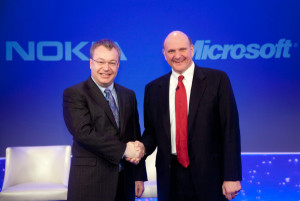More than 99 percent of Nokia’s shareholders have voted to approve Microsoft’s acquisition of the Finnish company’s Devices & Services business.

Nokia entered into an agreement to sell “substantially all” of the Devices & Services business to Microsoft for €3.79 billion (US$5.1 billion) in the beginning of September. Once the acquisition closes, Microsoft will also pay €1.65 billion to license Nokia’s patents.
The vote took place at an extraordinary general meeting in the Helsinki Ice Hall, where executives explained the reasoning behind the deal and were grilled by shareholders for several hours.
The acquisition is expected to close in the first quarter of next year. Microsoft’s CEO Steve Ballmer presented it as a victory for employees, shareholders and customers of both companies.
“Through our partnership we have already accomplished so much, and yet clearly the opportunity ahead is remarkable. And I am incredibly optimistic about what we can achieve together,” Ballmer said when the deal was announced.
Earlier this year Ballmer announced he would be stepping down, and former Microsoft executive Stephen Elop – who resigned as Nokia’s CEO when the deal with Microsoft was announced – is reportedly a candidate to replace him.
Once Microsoft has taken control, it has a huge number of decisions to make, including brand alignment, how the devices business should be structured within Microsoft, and the level of autonomy it should have, according to Geoff Blaber, CCS Insight’s vice president of research for the Americas. It will likely be a challenging integration process, but the faster it is, the better, he said.
Nokia shipped 8.8 million Lumia devices between July and September, with the low-cost Lumia 520 posting strong sales. There was also some good news in North America where sales grew from 500,000 units in the second quarter to 1.4 million in the third quarter. That helped increase Windows Phone’s third quarter market share to 3.6 percent, compared to 12.9 percent for Apple’s iOS and 81 percent for Android.





